Whitehaven’s Winchester South coal mine decried by environmentalists
There are now only two paths left to stop Queensland’s newest mega mine that will release almost 600m tonnes of greenhouse gases from the underground fossil fuel vault.
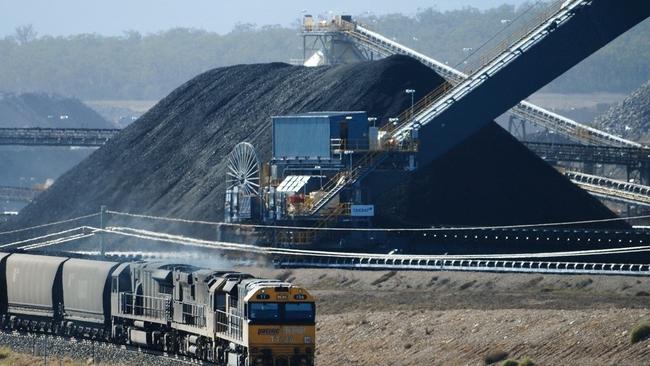
Business
Don't miss out on the headlines from Business. Followed categories will be added to My News.
There are now only two failsafes left to stop Queensland’s newest mega mine that will release almost 600 million tonnes of greenhouse gases from the underground fossil fuel vault.
Environmental advocates are decrying the state government’s recent approval of Whitehaven’s $1bn open cut coal mine slated to be built near Moranbah in Central Queensland’s Bowen Basin.
Environmental Advocacy Central Queensland director Dr Coral Rowston said the decision made it impossible for Queensland or Australia to “remotely meet” emission reduction targets or honour global promises.
Already spent our carbon budget
The UN in 2021 determined the world could only emit another 500 billion tonnes of carbon dioxide before it breached the 1.5 degrees celsius warming threshold — what is known as the carbon budget.
Dr Rowston said just with existing coal mines and associated industries, we had overspent our budget by 300 billion tonnes.
“It’s why the climate scientists are just shouting out that we can’t open up new coal mines,” she said.
“This is one of the biggest polluting mines in terms of greenhouse gas emissions … and in terms of area, it might actually be the biggest that’s been approved in the last 10 years.”
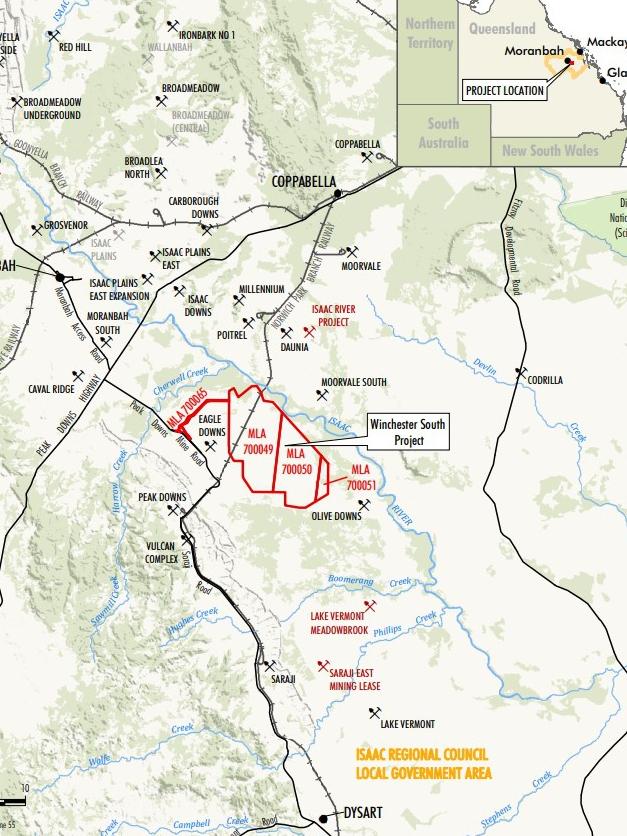
Dr Rowston added Winchester was “really hypocritical” and contradictory to Labor’s newly-announced ambition to reduce state emissions by 75 per cent by 2035.
Why Winchester’s coal could blacken state treasures
Queensland boasts a $22bn tourism industry and $175m fisheries industry.
Dr Rowston said more coal put them at risk as global warming harmed the reefs, and hotter oceans hindered fish reproduction.
“We will lose our fishing industry as the waters warm too much,” she warned, adding Winchester’s flora wipe-out also threatened on-land fauna.
“We’ve seen species like the koala and greater glider go from vulnerable to endangered in the last two years,” Dr Rowston said.
“We’re losing our species, we’re losing the control of the greenhouse gas emissions, so there’s a real need for (mine) proposals that were put in many years ago to be reassessed.”

The Coordinator-General’s report on Whitehaven’s Environmental Impact Statement stated Winchester mine would “result in the direct and unavoidable disturbance” of about 2000ha of “regulated vegetation” including 107ha of endangered ecosystems and 1834ha of “essential habitat” for the ornamental snake.
The report further stated 90 per cent of the 11,239ha mining lease area was “historically” cleared for cattle grazing and agriculture.
Only Plibersek or the courts can stop Whitehaven
For four years Whitehaven went back and forth with the state to get approval for its 17m tonnes of coal per annum mine.
But there are still two obstacles which could knock it over — which can be likened to a principal reversing a teacher’s decision.
First, the mine being of state significance had to get the nod from the Coordinator-General.
To do this Whitehaven’s draft EIS underwent public consultation and revision until a final draft was reached.
Dr Rowston explained once the Coordinator-General reviewed the EIS and gave its okay, which it did for Winchester South in November, it was the Department of Environment, Science and Innovation’s turn to consider relevant legislation and make its decision, which it did earlier this month.
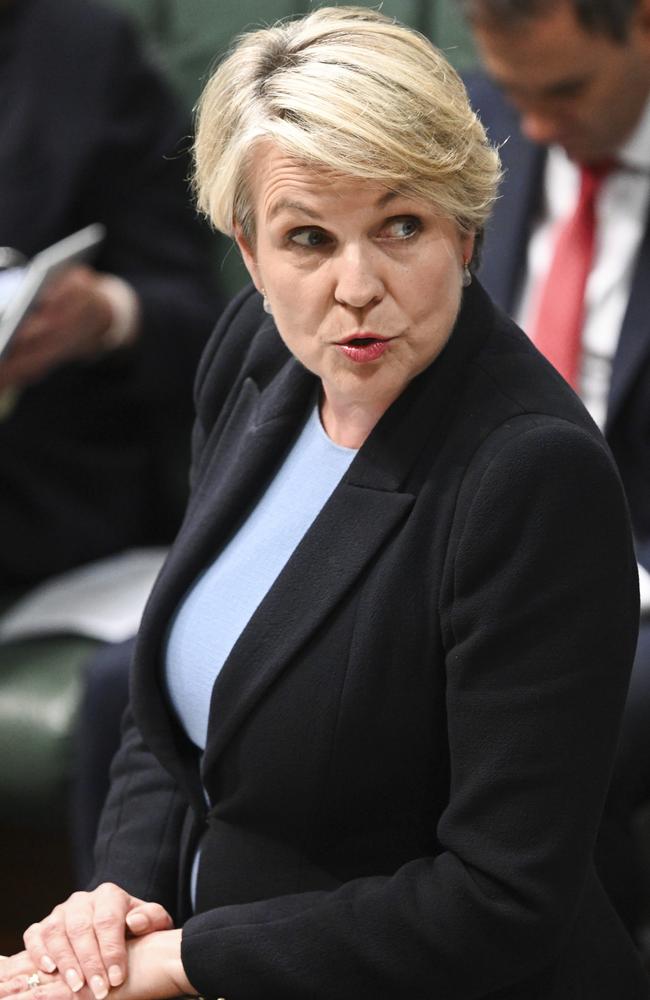
Dr Rowston said the only methods to reverse those approvals now were to ask federal Environment Minister Tanya Plibersek to refuse the mine or to take legal action.
Habitat swaps for greater glider, koala, ornamental snake and squatter pigeon
The Coordinator-General’s report stated it made recommendations to Ms Plibersek that Whitehaven create offsets to compensate habitat loss for the Australian painted snipe, squatter pigeon and koala.
This publication asked Whitehaven about those offsets with a spokesman responding the company had “carefully studied” the potential impacts to develop a “final design” that sought to avoid, minimise or offset the impacts.
In its Offset Management Strategy for the 28-year mine, Whitehaven has proposed offset areas during Stage 1 that were larger than the disturbed habitat areas for the greater glider, koala, squatter pigeon and ornamental snake.
But there were no offsets designated for the Australian painted snipe.
Why approvals process has two big methane issues
Even if Premier Steven Miles is successful in his push to legislate an ambitious 75 per cent emissions reduction target, more mines like Winchester South could be approved.
This is because the state government does not measure emissions from coal burnt overseas, known as Scope 3 emissions, as Queensland Conservation Council director Dave Copman explained.
This meant carbon target legislation would not account for the 300 megatonnes or $60bn worth of coal that Australia – as the world’s second largest coal exporter – shipped each year to major markets including Japan, China, South Korea, India and Taiwan.
More than half of Australia’s exported coal comes from the Bowen Basin.
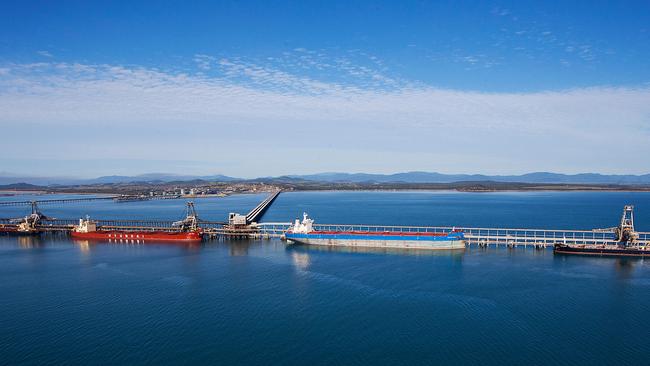
The Coordinator-General’s report stated Whitehaven planned to export its Winchester’s coal to countries that were signatories to the Paris Agreement and “have Nationally Determined Contributions”.
Whitehaven stated in its EIS that downstream Scope 3 emissions “are accounted for in importing countries’ greenhouse accounts” as this avoids double-counting and “promotes complete, global coverage of emissions, as well as transparency, accuracy and comparability across all countries”.
It further stated the Climate Change Authority’s review of the National Greenhouse and Energy Reporting scheme found the “challenges and burden” of reporting Scope 3 emissions outweighed the benefits as estimating an accurate total was “inherently complex and uncertain” and involved “many value chains across multiple economies”.
Mr Copman said another concern was methane emissions from coal mines were “potentially double than what is currently being calculated”, a revelation resulting from a study using the TROPOMI satellite.
Methane levels could be ‘severely’ underestimated
Researchers from the Netherlands analysed methane plumes coming from Basin Basin coal mines including the open cut Hail Creek as well as underground operations at Broadmeadow, Moranbah North, Grosvenor, Grasstree and Oaky North.
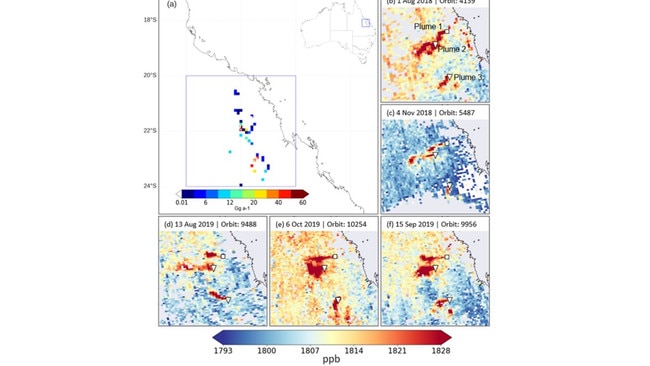
Their findings suggested methane levels were being “severely” underestimated and it justified making changes to Australia’s methane emissions report to the UN.
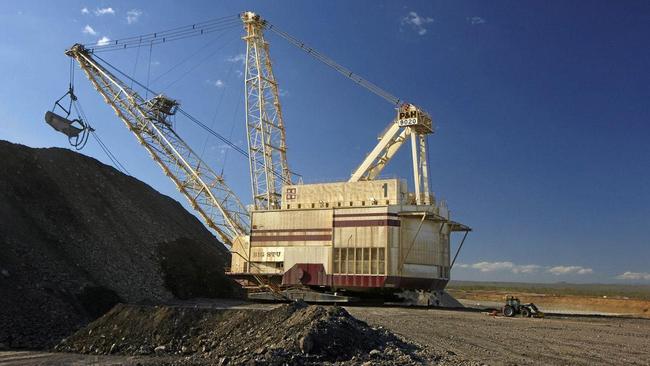
This publication asked if Whitehaven was aware of this study and how it would minimise emissions with its spokesman responding the company was “pleased to become one of the first proponents” to submit a plan to manage and minimise greenhouse gas emissions.
Its plan stated it was committed to buying carbon-neutral electricity, it had contributed to the $550m industry-backed fund behind Low Emission Technology Australia which looked at reducing emissions, and it was exploring how to decarbonise within its own operations as well with commercial partners in the value chain.
It’s a fallacy the world needs more metallurgical coal
You have likely heard the argument underpinning support for new mines like Winchester South, which is likely to have a 60:40 metallurgical vs. thermal coal ratio: the world needs coal for steel.
Dr Rowston said while the globe had not yet weaned off coal-based steel to green or hydrogen-based steel, there were enough metallurgical coal mines already in operation to “see us through for decades”.
Whitehaven’s own draft EIS stated alternative methods for making steel would be operating at scale by the 2030s.
This publication asked Whitehaven why it was building the mine considering its statement with a spokesman responding that the country’s high-quality metallurgical coal was “essential” for steel production particularly in Asia “where demand is forecast to continue to grow for decades to come”.
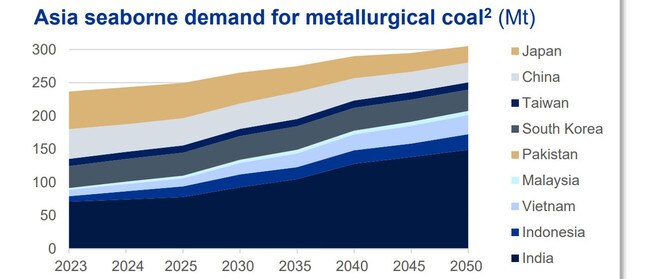
A study from Wood Mackenzie, commissioned for Whitehaven, showed Asia’s appetite for metallurgical coal would rise by about 29 per cent to 2050 with India’s demand to grow by about 110 per cent.
Further, the state government’s document which outlines a path towards a lower emission future says the national metallurgical coal industry is “essential” to building the steel “necessary” for renewable technologies.
Mr Copman also challenged the other common rhetoric: If Australia does not take advantage of coal, another country will.
He said while it was not exactly the same argument arms or drugs dealer used to rationalise their sales, the laws of supply and demand were “used to justify doing things that otherwise you can’t justify”.
He pointed to Sweden as a country that was making strides in the green steel space despite it paling in comparison to Australia’s access to renewable energy such as solar.
Queensland has the brains to ditch coal, and furthermore, it must
Mr Copman said Australia could be a renewable “superpower” with its plentiful supplies of iron ore, space and critical minerals needed to make the switch from “dirty, polluting” coal.
He said while material still had to be dug out of the ground, the emissions were far fewer as there were not “significant” releases of methane.
He added Queensland already had the technical and engineering expertise to transition to a renewable-powered state that would drive down energy prices that fossil fuels had propelled, and remove the need to rely on increasingly unreliable coal-fired power stations.
“We’ve got incredible talent, ability and resources – we should be leading the charge,” Mr Copman said.
The Whitehaven spokesman said it noted it still required federal approval before shovels could hit the ground.
“At the appropriate time, we anticipate the Minister to make a determination that balances economic and environmental considerations, recognises the steps project proponents are taking to minimise environmental impacts, and affirms the detailed evaluation of these matters as part of State-based consent processes,” he said.





